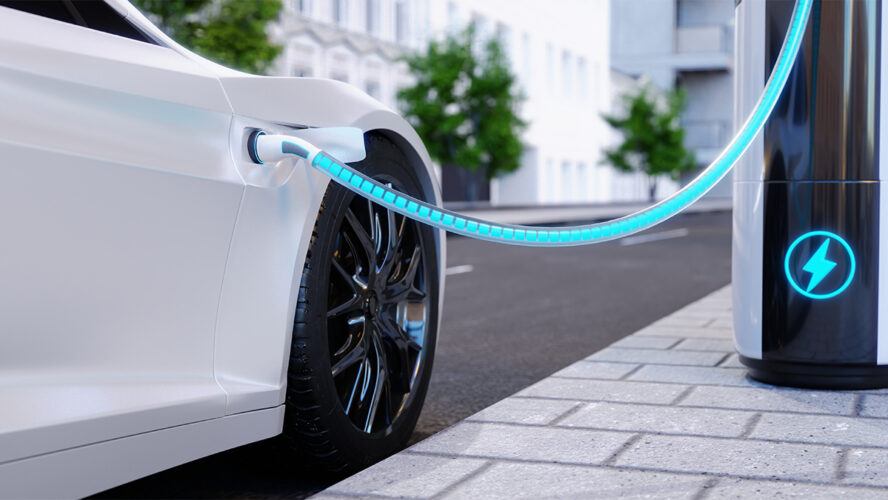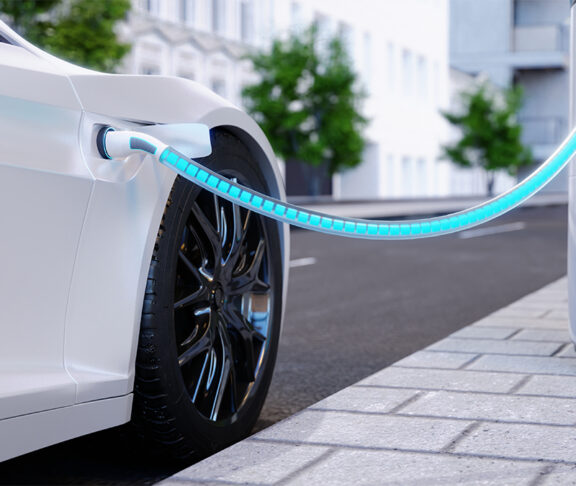Actor and EV advocate Robert Llewellyn shares insights on battery life, charging infrastructure, and what first-time electric car buyers should know.

Robert Llewellyn
Actor, Comedian, EV Advocate
What should first-time electric vehicle (EV) buyers know before making the switch?
It could be quite a long list, but I’ll try and keep it brief. The two basics that are important are (1) they’re a simpler machine and (2) they have a better battery life than people expect.
In terms of moving parts, wear and tear, servicing, and maintenance, EVs are much less stressful for the owner because they’re simpler. A four-cylinder combustion engine has between 1,300 and 2,000 moving parts, and if you have metal that’s moving against each other, you get wear and tear, you get friction, and you get heat. In an electric motor, there’s one moving part. It’s a phenomenal difference in energy efficiency, so the amount of energy you need in an electric car to move one mile is catastrophically less than you need for petrol. It just uses the energy more efficiently.
The second thing I think is critically important because there’s been so much press discussion about battery life. I have a 15-year-old Nissan. The battery was not very good when I bought it because the technology was new. I wouldn’t suggest anyone go back in time 15 years and buy an electric car. Bad idea. However, the new batteries that are in EVs now will literally outlast the car. The car will be dropping to pieces and need new steering, new suspension. The doors will be rusting, and the battery will be absolutely fine. That is, I think, the biggest single myth is, “Oh, after five years I’m going to have to buy a new battery.” The reality is you might need to buy a new car to put your battery in, because your battery would be fine. We’re talking about technology that will last 90 years. You’re never going to know how long your battery lasts because it will outlast us as human beings.
How difficult do you find it for people to learn how to operate and maintain an EV?
I mean, from the point of view of operating, it’s just like driving an automatic. It’s exactly the same. There are two pedals — one makes you go faster, and one slows you down. If you can do that in a combustion car, you can drive an electric car. There are quite a lot of electric cars that will sometimes confuse people because you get in them and it’s already on.
You know, the electric motors are so simple in terms of mechanics. They’re mechanically simple. I mean, they’re clever inventions, but they’re mechanically simple. You know, you want your car checked for safety, and all those things are identical: the tires, the wheels, the steering, the suspension. However, other than that, you only need to worry about washer fluid for your windshield.
How often do EVs need to be charged?
It depends on how often you use it, how far you drive, and how often you make long journeys. People who make long journeys are going to need to charge their EV more in the same way you buy more gas.
If you’re using your electric car as a kind of suburban runabout — going to the shops, going out to a restaurant, taking your kids to school, picking up granny, doing your laundry — you can easily have a car with a 500-mile range, which is now very common.
You would charge it once a week. You’d literally charge it once a week. You wouldn’t need to bother. Plus, there are numerous commercial premises with car parks — like a restaurant, hotels, gyms — that have chargers that you don’t have to pay for. You can plug your car in while you’re at the gym.
What is the most common misconception that people have about charging infrastructure?
I talk to people here, and they go, “I’d love an electric car, but the charging…public charging is just not there yet.” I show them the map of the UK, and you can’t see the UK because there are so many chargers, it just blanked it out.
There are 65,000 publicly accessible rapid chargers in the UK. I know there are many thousands in America, but it’s spread out, so there’ll be clusters on the east and west coasts for sure. However, what is appearing now, particularly in Europe, is that there are now about 12 hubs that are open on major roads. They have between, let’s say, 28 and 50 rapid chargers. They’ve got a cafe; they’ve got a big solar canopy that powers it.
The first time you drive an electric car, you will get range anxiety because you’ve heard for the last 10 years that you’ll get range anxiety the first time. My first long drive, I was anxious, I was sweating, it was terrifying, and then I got home, and I went, “Why was I worried?” Then you get over that quickly.
How do you plan a long journey in an EV?
The first time I drove to Italy in a Tesla — from the UK to Italy — it was about 1,200 miles. It’s not a stupendous distance, but it’s quite a long way. So, we put the address of where we were staying in Italy into the navigation, and it marked out the route, and it said, “Stop here for 12 minutes for a charger, then next charger, stop here for 14 minutes.” That’s what we needed was that sophisticated software that takes that anxiety away.

